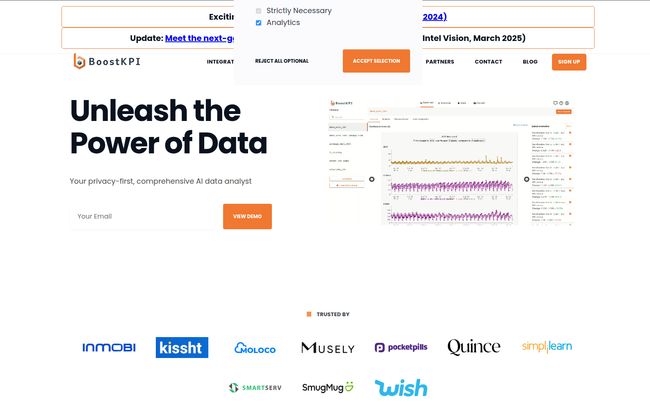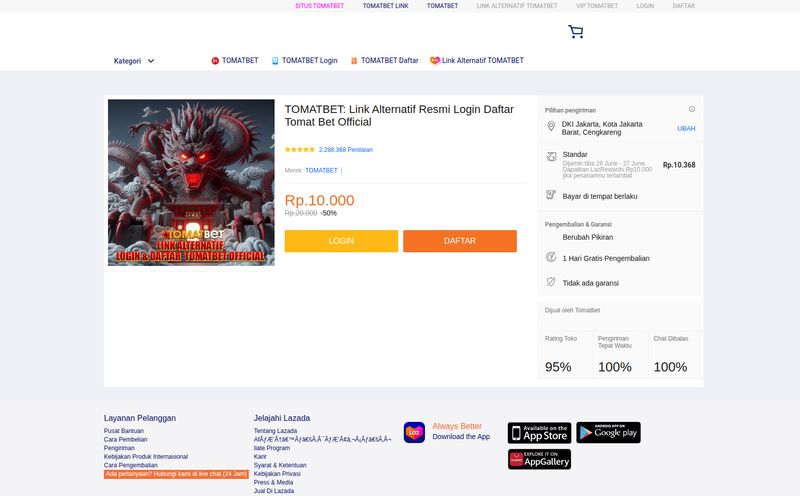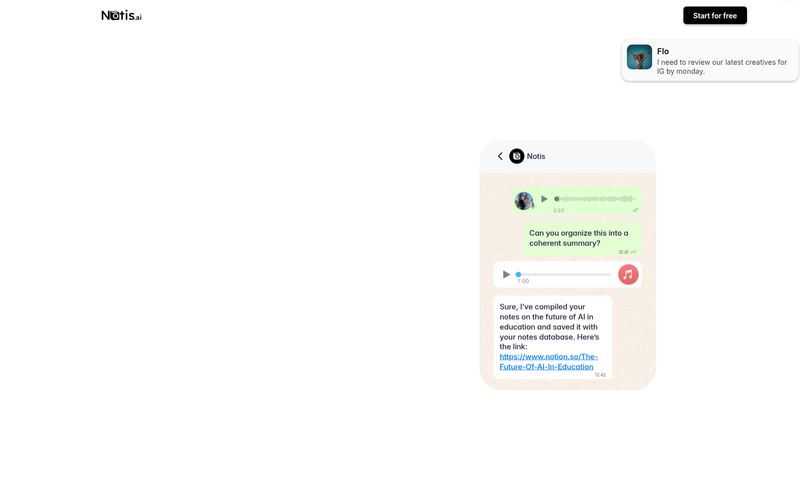You’ve got more data than you know what to do with. Dashboards, spreadsheets, GA4 reports… it’s a flood. And every Monday morning, it’s the same ritual. You look at the charts, and a key metric—say, user conversion rate—has dropped off a cliff over the weekend. What's the first thing that happens? Panic. The second? A frantic, coffee-fueled goose chase trying to figure out why.
I’ve been there more times than I can count. Spending a whole afternoon sifting through segments, dimensions, and date ranges, feeling like a detective in a low-budget noir film. The culprit is always something tiny and obscure. A broken UTM parameter, a botched update in a specific browser version, a marketing campaign in one city that went weirdly wrong. By the time you find it, you've lost half a day of productivity. It’s exhausting.
So when I heard about a tool called BoostKPI ADA—an "AI Data Analyst"—my curiosity was piqued. The promise is simple but bold: stop guessing and let an AI do the heavy lifting to find the root cause of your KPI changes. But as we all know, in the world of MarTech, promises are cheap. Does it actually work? I decided to take a closer look.

Visit BoostKPI
So, What is BoostKPI's ADA, Really?
On the surface, it’s an AI platform that connects to your business data. But that's a bit like calling a Ferrari 'a car'. The magic is in the details. ADA is designed specifically for what's called high cardinality, time-series datasets. Okay, jargon alert. Let’s break that down.
Time-series data is just data tracked over time. Your daily sales, hourly website visitors, etc. Simple enough. High cardinality is the tricky part. It refers to columns in your data with tons of unique values. Think 'City', 'Product SKU', 'Marketing Campaign Name', or 'Device Model'. When your conversion rate drops, the cause could be hidden in any one of those thousands of unique values, or even a combination of them. Manually checking all of those is... well, it's impossible.
ADA is built to tear through those combinations in minutes. It's like having a data detective on your team who can interview thousands of suspects simultaneously, never sleeps, and runs on pure logic instead of stale coffee.
The Features That Actually Matter
A lot of SaaS tools throw a kitchen sink of features at you. I’m more interested in the ones that solve a real-world problem. Here’s what stood out to me with ADA.
Talking to Your Data with the AI Chat
This is probably the coolest part. Instead of building a complex report, you can just… ask questions. In plain English. Things like, “Why did my conversion rate drop yesterday?” or “What were the top 3 drivers of new signups last week?”. The system doesn’t just spit out a chart; it gives you a narrative answer, pointing to the specific segments that caused the change. For teams without a dedicated data scientist on standby 24/7, this is a massive deal.
Beyond the Numbers: Heatmaps and Drilldowns
While the chat is great for quick answers, sometimes you need to see the bigger picture. ADA uses heatmaps to visually flag anomalies across all your different data segments. You can spot a problem area at a glance—that one red square in a sea of green—and then use the drilldown feature to get more granular. It guides your attention instead of making you hunt for the problem yourself.
Privacy-First. A Non-Negotiable in 2024
Let's be honest, hooking up a third-party AI to your core business data can feel a little... dicey. I was pleased to see BoostKPI emphasizes a "privacy-first" approach. They state that the data is processed within the client’s own private cloud environment (like Google BigQuery, Snowflake, etc.). This means your sensitive customer data isn't being shipped off to some unknown server. For any company that takes security seriously—which should be every company—this is a critical feature, not just a nice-to-have.
Let's Talk Money: BoostKPI Pricing Breakdown
Alright, the all-important question: what does it cost? The pricing structure is refreshingly clear, which I appreciate. They offer a few tiers, and you can get a 20% discount for paying annually.
| Plan | Monthly Price | Who It's For |
|---|---|---|
| Starter | $0 | Individuals or small teams who want to test the waters. You can try the AI chat and upload a limited dataset (up to 1M rows) to see how it works. A genuine free trial. |
| Business | $3,000 | This seems like the sweet spot for most growing companies. You get unlimited datasets, automated connections, 5 seats, and a shared Slack channel for support. This is for teams that are serious about proactive data monitoring. |
| Enterprise Basic | $7,500 | Larger organizations. You get everything in Business plus 20 seats, faster support, and some hands-on help with setup. If you have multiple teams needing access, this makes sense. |
| Enterprise Plus | Custom | The big leagues. This is for large corporations needing custom SLAs (Service Level Agreements), priority support, and all the bells and whistles. |
My take? The $3k/month for the Business plan sounds like a lot, but compare it to the fully-loaded cost of hiring even one junior data analyst. If it saves your team dozens of hours a month and helps you catch costly issues faster, the ROI is there.
The Good, The Bad, and The AI
No tool is perfect. After digging through the site and case studies from companies like Wish and InMobi, here's my honest breakdown.
The Upsides (My Take)
The biggest pro is the shift from reactive to proactive analysis. Instead of you hunting for problems, ADA brings them to you. The time-saving aspect is obvious, but the real value is in catching things you would have otherwise missed entirely. The cost-effectiveness compared to expanding a data team is also a huge plus. And I have to give them props for making it collaborative—sharing insights should be easy, and they seem to get that.
A Few Things to Consider
On the flip side, this isn't a magical plug-and-play solution. You still need to connect your data sources, which can require some initial setup and technical know-how. The free trial also has a cap on CSV uploads (1 million rows), which might be a bit limiting for testing with truly large datasets. And of course, you're placing a degree of trust in the AI's analysis. It's incredibly powerful, but you still need a smart human in the loop to interpret the results and make the final business decision.
Who Is This Tool For? (And Who It Isn't)
So, who should be booking a demo right now? In my opinion, BoostKPI ADA is a fantastic fit for:
- Growth and Marketing Teams: People who live and die by conversion rates, ROAS, and user engagement metrics.
- E-commerce Managers: For quickly diagnosing dips in sales, add-to-cart rates, or performance of specific product categories.
- Product Teams: To understand how feature releases or UI changes impact user behavior.
- Data Teams who are Overwhelmed: This tool can act as a force multiplier, automating the tedious first-pass analysis and freeing up your analysts to work on deeper strategic projects.
Who might not need it? If you're a very small business with straightforward data and only a handful of variables, the power of ADA might be overkill. If your data isn't clean or well-structured to begin with, you'll need to sort that out first. Garbage in, garbage out—even for a smart AI.
Frequently Asked Questions
Can't I just build something like this myself with an LLM?
You could try, but it's not that simple. General-purpose LLMs like GPT-4 are amazing, but they aren't specialized for structured, high-cardinality data analysis out of the box. ADA is fine-tuned for this specific, and very difficult, task. It's about having the right tool for the job.
What kind of data sources does it support?
It's built to connect with modern data warehouses. The site mentions partners like Google BigQuery, Snowflake, and Databricks, which covers most of the big players in the cloud data space.
How long does it take to get set up?
This will depend on your data stack, but their goal is to make it quick. For the Enterprise plans, they even include setup and configuration hours, which tells me they understand it's a potential hurdle and they're willing to help.
Does it work for startups?
Absolutely. The free Starter plan is a clear indicator they welcome smaller companies. The Business plan, while not cheap, could be a justifiable expense for a funded startup that needs to move fast and make data-driven decisions without a huge analytics payroll.
Final Verdict: Is BoostKPI ADA a Game-Changer?
I went into this a bit of a skeptic, but I’m coming away impressed. We're drowning in data, but we're starving for insights. Tools like BoostKPI ADA represent a necessary shift in how we work. It’s not about replacing human analysts, but about augmenting them. It automates the most time-consuming, frustrating part of their job—the 'why' hunting—so they can focus on strategy and action.
The testimonial from InMobi's Head of Growth says it all: "a godsend... we're now able to surface the 'why' behind the numbers." And lets be honest, who doesn't want that?
If you're tired of the Monday morning data scramble, it's definitely worth giving their free trial a spin.



